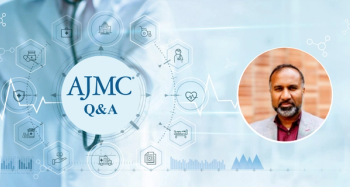
Dr Mila Felder Discusses Promoting Well-Being Within an Organization
Mila Felder, MD, FACEP, emergency physician and vice president, Wellbeing for All Teammates, Advocate Health, discusses how to implement well-being into peer support within oncology care.
Bringing leaders, clinicians, and nonclinicians together through initiatives like the Council on Well-Being will help promote this type of support throughout an organization, says Mila Felder, MD, FACEP, emergency physician and vice president, Wellbeing for All Teammates, Advocate Health.
Transcript
How does the concept of co-ownership of well-being translate into practical actions within the organization, particularly in promoting collaboration between clinical and nonclinical teammates to support each other's well-being?
I think my journey has been very much that. I started personally leading the well-being for a hospital, Advocate Christ Medical Center. Our hospital is busy [with] trauma, tertiary care, cancer transplant, and advanced heart disease, training with multiple residencies. An initial idea was [to do] this work through medical staff because I was entering the medical staff office as a medical staff president. This work does not have any resources or support for it at this single hospital as part of a big health care system. We funded this work through our medical staff dues. By doing that, we limited the work to just physicians and nurse practitioners and physician assistants, only clinicians.
A lot of that work was tremendously impactful. We had fun building communities, we did women's events together, we did reading clubs, improv workshops, etc. We very quickly realized that there is no well-being for one group, because it just increases on both sides, nurses saying, “Why do doctors get that and we don't?” and doctors saying, “Hey, this is just about us. We are isolated in this bubble."
From there, for the medical group in the Midwest, and now for the whole enterprise, I think our goal is to approach the well-being work together, clinicians and nonclinicians, to look through counseling [and] well-being, through peer support, to be able to support it in the way they can receive it, which may look different. For example, we have a 2-hour shorter version of peer support training that’s clinician focused, because they already received some of that training during their education.
But in the end, they all are identical in their peer support ambassadorship, coming together at one time during the week, doing the same kind of support in the frontline, with the idea of, you bring the leaders empowered to take care of themselves and the frontline clinicians and nonclinicians together to the Council on Well-Being to then get the measures that are going to roll out, such as well-being grants, some of the other things that we do together.
You empower people to feel that it's organizational culture, not intervention. And that's really where the difference happens. That's why our goal is 30% with peer support, because at that point it stops being about, “Do I have someone on the floor that knows about peer support?” and it starts being more about an organization. It's an army of people speaking the same language of, “I'm here for you, I understand that some of this we cannot control, and we will not fix. Let's embrace that as humanity in us and take that forward together.”
Newsletter
Stay ahead of policy, cost, and value—subscribe to AJMC for expert insights at the intersection of clinical care and health economics.





























































